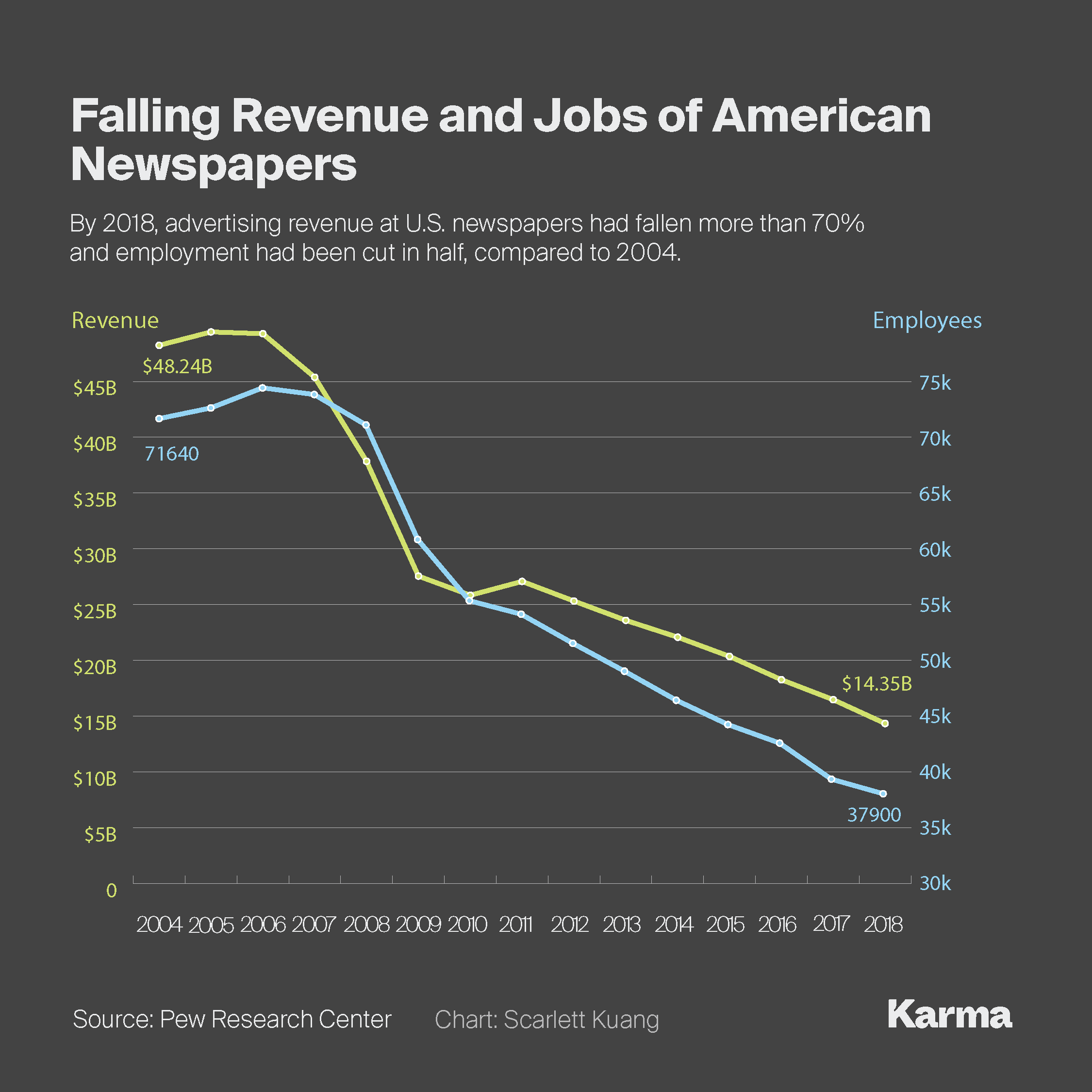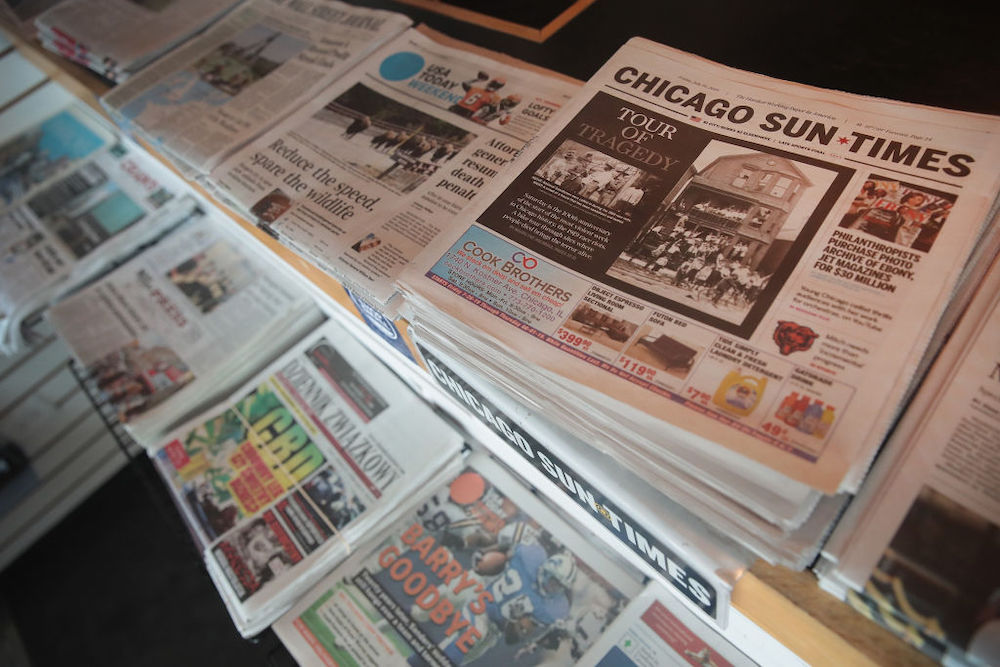- The U.S. news industry, already reeling, may suffer severe blow from pandemic
- Publicly traded news outlets are sustaining severe revenue losses in crisis
- The closing of small newspapers would be a big blow to communities across the U.S.
New Jersey’s largest newspaper’s online affiliate put out the tin cup last week, begging readers to subscribe for $10 a month.
“COVID-19 is taking advertisers and print subscribers from us. Our industry has been in financial crisis for at least 15 years and will not survive unscathed,” NJ.com lead editor Kevin Whitmer wrote in an online appeal April 7.
The U.S. news industry has been shrinking for years, with hundreds of newspapers dying as readers balk at paying for information they want to get online for free. The deadly coronavirus pandemic may decimate hundreds more.
Since the health crisis began, about 28,000 employees of U.S. news media companies have been laid off, furloughed or had their pay reduced as publications cease or cut back, the New York Times estimated. This week alone both the Los Angeles Times and McClatchy Co., publisher of more than two dozen papers, announced they were cutting jobs. Things have gotten so rough for the industry that the nonprofit Poynter Institute keeps an updated list of the industry’s setbacks on its website.
“The unfortunate truth is that many newspapers were already facing revenue challenges,” said Dean Ridings, CEO of the industry association America’s Newspapers, which represents about 1,500 daily and weekly publications. Ridings told Karma that, judging from feedback he’s gotten from the group’s members, some publications have lost 40% of revenue since the pandemic hit, others even more.

The losses caused by the pandemic were just the latest blow to the industry. More than one in five papers had already closed since 2014, according to a report by the University of North Carolina’s School of Media and Journalism last year.
Ridings said the papers struggling the most are local community ones, because they are more reliant on selling advertising to local mom & pop businesses. With those businesses closed, revenue has dried up.
America’s Newspapers joined with three other industry associations last week to call on Congress for financial help, including $5 billion to $10 billion for direct funding for local media advertising. Newspapers, especially small and rural ones, play an important role in their communities and need to be supported, Ridings said.
Matt Adelman, publisher of two weeklies in Wyoming, said he was impressed with the cooperation that the different associations have shown in seeking the government’s support.
“We’re all interested in good journalism, whether broadcast, digital or print,” Adelman told Karma.
His newspapers — the Douglas Budget and the Glenrock Independent — have seen advertising revenue dry up to the point that he had to let go his entire advertising department. Since no sports are being played during the crisis, his sports reporters are now covering local news.
All told, he said, he now has 12 workers, six full-time, compared to as many as 27 just three years ago.
He has seen a surge in online readership, though, from 30,000 page views per month before the pandemic to 250,000 a month since. With that has come some subscriptions, but like most small weeklies the Douglas Budget and Glenrock Independent mostly depend on advertising revenue.
“The demand for local news is exploding,” he said, “but the resources are shrinking.”
Even so, the current tough times haven’t discouraged newcomers to the field.
Gretchen Wehmhoff and Melinda Munson agreed to take over the Skagway News, a weekly located in a remote town of about 1,100 in southeast Alaska, in March after paying a nominal $20 to its previous owner.
The timing couldn’t be worse. The newspaper isn’t publishing a physical edition during the pandemic because the printing press is in Canada and the border is closed. While the new owners have launched a revamped website and have sent some PDFs out to subscribers, they also face the prospect that the newspaper’s main revenue source — a visitor’s guide that had been scheduled to be distributed to now-canceled cruise ships during the tourist season — won’t be profitable this year.
Neither partner is drawing a salary and Wehmhoff said she is unsure when they might.
“If you are in it to make money this wouldn’t be the job for you,” Wehmhoff told Karma. Still, she added, “I’m enjoying it.”
NJ.com’s Whitmer declined to comment when contacted through email by Karma.
Photo by Scott Olson/Getty Images






















